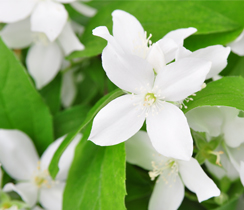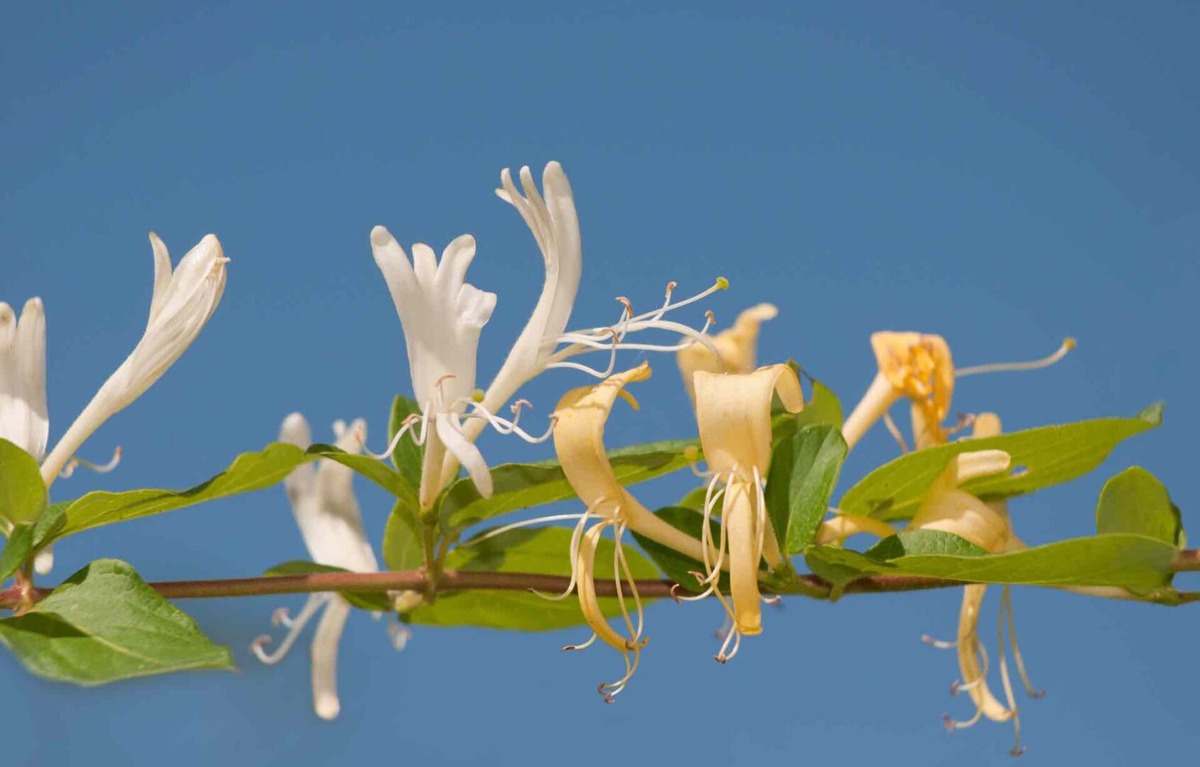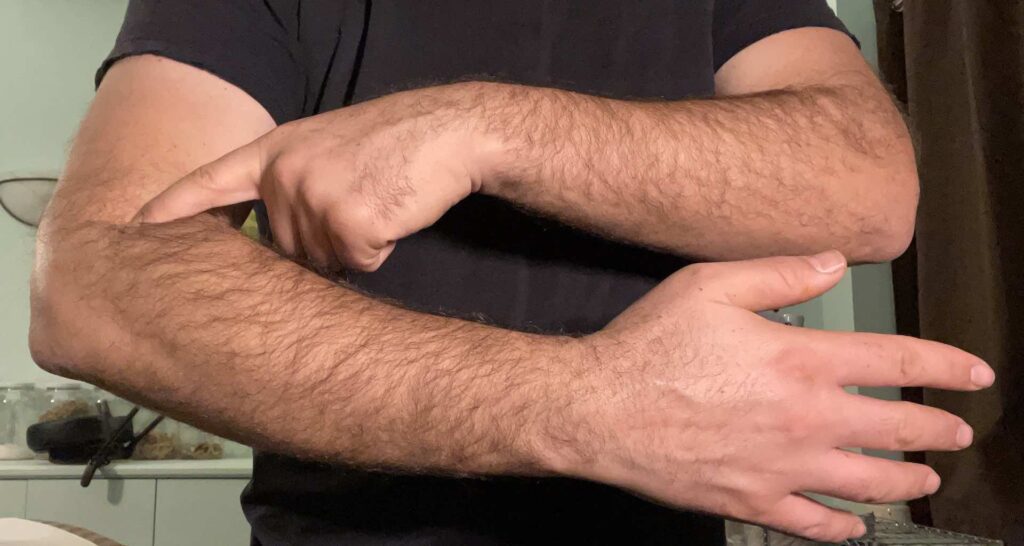Eczema
Eczema
Chinese medicine has been treating skin conditions like eczema (also called atopic dermatitis) for over 2000 years with herbal medicine and acupuncture. The goal of the therapy is to address the root imbalance causing the condition. This is done through personalized herbal medicine in the form of teas and topical medications, as well as customized acupuncture treatments.
Throughout my years of clinical experience, I have helped many patients with atopic dermatitis heal. Chinese medicine therapies help to reduce inflammation and itching as well as lead to long-term improvements by reteaching the body to be healthy. I have found the correct combination of Chinese herbal medicine teas and topical therapies, along with acupuncture, will provide profound and long-lasting improvement and relief for patients with atopic dermatitis.
In this article, I will tell you how Chinese medicine works to treat eczema, share clinical research, and share different treatment methods for atopic dermatitis.
This article is for educational purposes only and does not serve as medical advice. Please consult a Chinese Medicine Practitioner before taking Chinese herbal medicine.

Chinese Medicine Dermatology
The eczema chapter has an in-depth explanation of Chinese medicine treatment which I wrote with Mazin Al-Khafaji and Marnea Ergil.
Symptoms and Causes
Atopic eczema is a very common condition affecting up to 20% of people in developed nations. And the numbers are rising. No one knows the exact cause of the increase in eczema, but factors include irritants, harsh soaps, over-bathing, allergies, environmental pollutants, and diet (1). Atopic eczema is treated most often with topical steroids that suppress the inflammatory response. Unfortunately, steroids also have many side effects. Studies have shown that Chinese herbal medicine can reduce corticosteroid usage in children. (2)
Eczema develops in each person because of an interaction between the person and the environment: someone has a genetic propensity for dry skin and an inflammatory response. When this person has contact with a chemical, bacterial, or environmental irritant, it will trigger the development of eczema (3).
Eczema skin is dry, itchy and flaky. Scratching will intensify the redness, itchiness, and swelling, and may cause the skin to become oozy or weepy. Babies and young children are most likely to be affected by the skin on their cheeks, wrists and inner elbows. While the skin of the neck and inner elbows as well as the backside and knees is more common in older children and adults. Eczema is more common in childhood, but it often improves in adulthood and adolescence. In some cases, eczema may persist into adulthood.
Atopic skin is also known to be sensitive to infection, stress, changes in the weather, particular foods, or irritant substances which may cause a flare in the condition.
While the exact cause of the condition is unknown, eczema skin has distinct characteristics: dry skin, increased IgE production, a tendency for the overgrowth of staphylococcus aureus, higher skin pH, and a deficiency in gamma-linolenic acid (GLA) (4). Correcting these imbalances can help improve the condition.
Eczema in Chinese Medicine
Traditional Chinese Medicine refers to eczema as the “wind of four crooks” referring to the eczema rashes on the inside of the elbows and knees which are the common locations of the condition (5).
In Traditional Chinese Medicine, health is a state of harmony in the body and harmony between the body and nature. Chinese medicine uses vivid imagery from the natural world to describe illnesses and create the most effective treatment for each patient. This nuanced understanding and treatment approach is the result of thousands of years of observational practice.
Over millennia, Chinese medicine practitioners have carefully recorded the manifestations of eczema, and the effects of different medicinal herbs on these presentations. This accumulated knowledge allows today’s practitioners to create highly tailored treatment plans that match the individual presentations of each patient. Far from being just an abstract or academic concept, this system of identifying and rectifying imbalances based on observed symptoms is a core practice in TCM with real-world implications for treatment outcomes.
The three imbalances most often associated with atopic eczema are Heat, Dampness, and Wind.
The skin is closely examined to determine the specific imbalance which is present. Heat manifests as red, inflamed, dry, cracked skin. While dampness can include oozing or weeping, crusting, and blistering skin lesions. Wind is characterized by the rapid onset of symptoms and the movement of symptoms from one place to another. For atopic dermatitis, wind is also associated with itch and many of the herbs to dispel wind are helpful for reducing itching.
Examination and Treatment:
The goal of a TCM examination is to carefully discern the relative contribution of Heat, Dampness, and Wind in each patient. During the exam, we will discuss your skin symptoms, as well as digestion, sleep, stress levels, feelings of hot and cold, and other body symptoms. Most importantly, I will observe the skin to see what your eczema looks like. This is how Chinese medicine doctors read the skin to determine the imbalance.
A personalized treatment is created to address the specific imbalances you are experiencing. Chinese medicine therapies can be used alongside Western medicine in order to reduce the use of medications or help come off of your medications. They can also be used to reduce medication side effects.
Chinese medicine can bring about profound and lasting results. This is thought to be due to the immuno-regulatory effect of Chinese herbs, acupuncture, and topical herbal medicines. Rather than suppressing the immune function acupuncture and Chinese herbs help to bring it back into a healthy state. I like to say this is like hitting the reset switch on the body.
Chinese Herbal Medicine:
Chinese herbs are prescribed in a combination of 8-12 herbs called a formula. Each person will receive a personalized herbal formula, created to address each specific manifestation of the condition.
For example, If the eczema is caused by damp heat, herbs that are bitter and cold that drain heat and dryness are used. But if the eczema is caused by wind and heat, herbs that clear heat and moisten the skin will be used. If the wrong herbs are used they will not work, and at times can make the condition worse.
Some herbs we may use include Ku shen which is well-known for its ability to reduce inflammation, itching, and the growth of Staphylococcus. It has also been shown to regulate the inflammatory process, making it less likely your immune system will react to an allergen (6).
Jing Jie and fang Feng (ledebouriella roots) are classic combinations to reduce itching caused by wind and heat. Another classic combination is honeysuckle ( jin yin hua) and forsynthia fruit (lian qiao). These herbs are well known for their anti-inflammatory, antibacterial, and anti-allergic properties.
When the eczema is of a damp heat nature, bitter cold herbs are used. Huangqin (skullcap roots), huanglian (coptis Rhizome), and huangbai (phellodenron-bark) are known as the three yellows. These herbs make up the formula huanglian jie de tang (coptis formulation to reduce toxic effects), which has been shown to have anti-inflammatory and antibiotic effects (7). This formula is very bitter and is used when the damp heat or toxicity is very strong.

Honeysuckle flower has anti-inflammatory and antibacterial qualities
Clinical trials have shown that Chinese herbal medicine could significantly improve symptoms and quality of life in AD patients when compared to placebo (8).
Topical Herbal Medicine:
The use of topical herbal medicine plays an essential role in the comprehensive management of eczema. This approach allows direct contact with the affected skin, offering localized relief and addressing underlying imbalances reflected on the skin’s surface.
Topical herbal medicine is important to reduce inflammation, bacterial levels, and itch, as well as moisten the skin. Topical herbs can be used as creams, oils, soaks, baths, and balms. We will use different creams based on the qualities of your eczema and the location of the lesions. Balms and oils are used for the body and face. While herbal soaks and baths can be effective if the eczema is on your hands or feet.
For infants and young children, herbal baths are the first-line treatment and often the only therapy that is needed. This is followed by the use of an herbal or general moisturizer.
Acupuncture:
Acupuncture works to relieve itch and reduce the itchiness, redness, and swelling of eczema. It can also boost immunity, improve sleep, and reduce stress. Acupuncture can also be helpful in reducing the frequency and severity of flare-ups.
Research has shown that acupuncture decreases itching by altering the brain’s itch response. Acupuncture might also help reduce itching by decreasing the activation of basophils (a white blood cell that is involved in the inflammatory response in eczema) (9).
Acupressure is the application of pressure and massage at acupuncture points. For children and infants, acupressure is a great option for helping to reduce itch and make the child more comfortable, because it can be done at home. A small study found that self-administration of acupressure at Qu Che (LI11) decreased itching (10). Massaging this point with oil after a bath as part of the daily routine helps to calm the individual and create a greater sense of peace.
To find the acupressure point, hold the arm slightly bent with the palm facing the body. Qu Che (Large Intestine 11 or LI 11) is located on the top or thumb side of the elbow, right in the center.

Eczema can disrupt sleep. The great thing about acupuncture, regardless of the reason for the visit, is that it can help patients feel more relaxed and well-being. Acupuncture is also known to lower anxiety, improve sleep quality, and provide more energy.
The Skin Barrier
The skin barrier plays an important role in protecting the body from allergens, chemical injuries, and microbial pathogens. It is made up of a complex network of proteins, lipids, and cells including ceramides, cholesterols, and fatty acids. Atopic dermatitis causes a breakdown of this barrier, leading to an increased permeability of the skin, allowing the penetration of allergens and irritants.
Chinese medicine uses topical herbal oils, ointments, and baths to reduce inflammation and help restore the skin barrier.
Conclusion
Atopic Dermatitis (AD), or eczema, represents a significant global health challenge, marked by rising prevalence and the distressing impact it has on patients’ quality of life. My experience has shown me the ability of Traditional Chinese Medicine and acupuncture to help patients feel better and bring about long-lasting improvements.
My goal is to help you feel better by identifying the specific imbalance causing eczema and tailoring the treatment to target this problem. Treating atopic dermatitis at the root helps to bring about long-term improvements.
Herbal medicine, both systemic and topical applications of these herbs have demonstrated their efficacy in clinical experience as well as research trials, bringing symptomatic relief, reduction of inflammation, and promoting skin health. Acupuncture can reduce discomfort and help speed the healing of the skin.
Ultimately, I strive to bring holistic, patient-centered care, to each patient. To schedule your appointment please call us at 212-319-5757 or schedule your appointment online.
- PubMed Health. Atopic Eczema. Accessed 1/5/2015.
- Chen HY, Lin YH, Wu JC, et. al. Use of Traditional Chinese medicine reduces exposure to corticosteroid among atopic dermatitis children: a 1-year follow-up cohort study. J Ethnopharmacol. 2015 Jan 15;159:189-96.
- Cork MJ, Danby SG, Vasilopoulos Y, et.al. Epidermal Barrier Dysfunction in Atopic Dermatitis Journal of Investigative Dermatology. (2009) 129, 1892–1908. Published online 4 June 2009.
- Ruzicka T. Atopic eczema between rationality and irrationality. Arch Dermatol. 1998 Nov;134(11):1462-9.
- Mazin Al-Khafaji. Atopic Eczema “Wind of the four crooks.” Journal of Chinese Medicine. Number 77: p5-8. February 2005.
- He, X., Fang, J., Huang, L., Wang, J., & Huang, X. (2015). Sophora flavescens Ait.: Traditional usage, phytochemistry and pharmacology of an important traditional Chinese medicine. J Ethnopharmacol, 172, 10-29.
- Chen, Y., Xian, Y., Lai, Z., Loo, S., Chan, W. Y., & Lin, Z. X. (2016). Anti-inflammatory and anti-allergic effects and underlying mechanisms of Huang-Lian-Jie-Du extract: Implication for atopic dermatitis treatment. J Ethnopharmacol, 185, 41-52.
- Tan, H. Y., Zhang, A. L., Chen, D., Xue, C. C., & Lenon, G. B. (2013). Chinese herbal medicine for atopic dermatitis: a systematic review. J Am Acad Dermatol, 69(2), 295-304.
- Pfab, F., Kirchner, M. T., Huss-Marp, J., Schuster, T., Schalock, P. C., Fuqin, J., . . . Napadow, V. (2012). Acupuncture compared with oral antihistamine for type I hypersensitivity itch and skin response in adults with atopic dermatitis: a patient- and examiner-blinded, randomized, placebo-controlled, crossover trial. Allergy, 67(4), 566-573.
- Lee, K. C., Keyes, A., Hensley, J. R., Gordon, J. R., Kwasny, M. J., West, D. P., & Lio, P. A. (2012). Effectiveness of acupressure on pruritus and lichenification associated with atopic dermatitis: a pilot trial. Acupunct Med, 30(1), 8-11.
Feedback From our clients…
“Before I saw Dr. Alban my eczema was out of control and getting worse every year. I tried all western forms of therapy including steroid cream after steroid cream. But after a few months of visits with Dr. Alban, between the acupuncture therapy and the herbal teas, he suggested the eczema not only cleared up but has since yet to return.”
~ Ryan, NYC